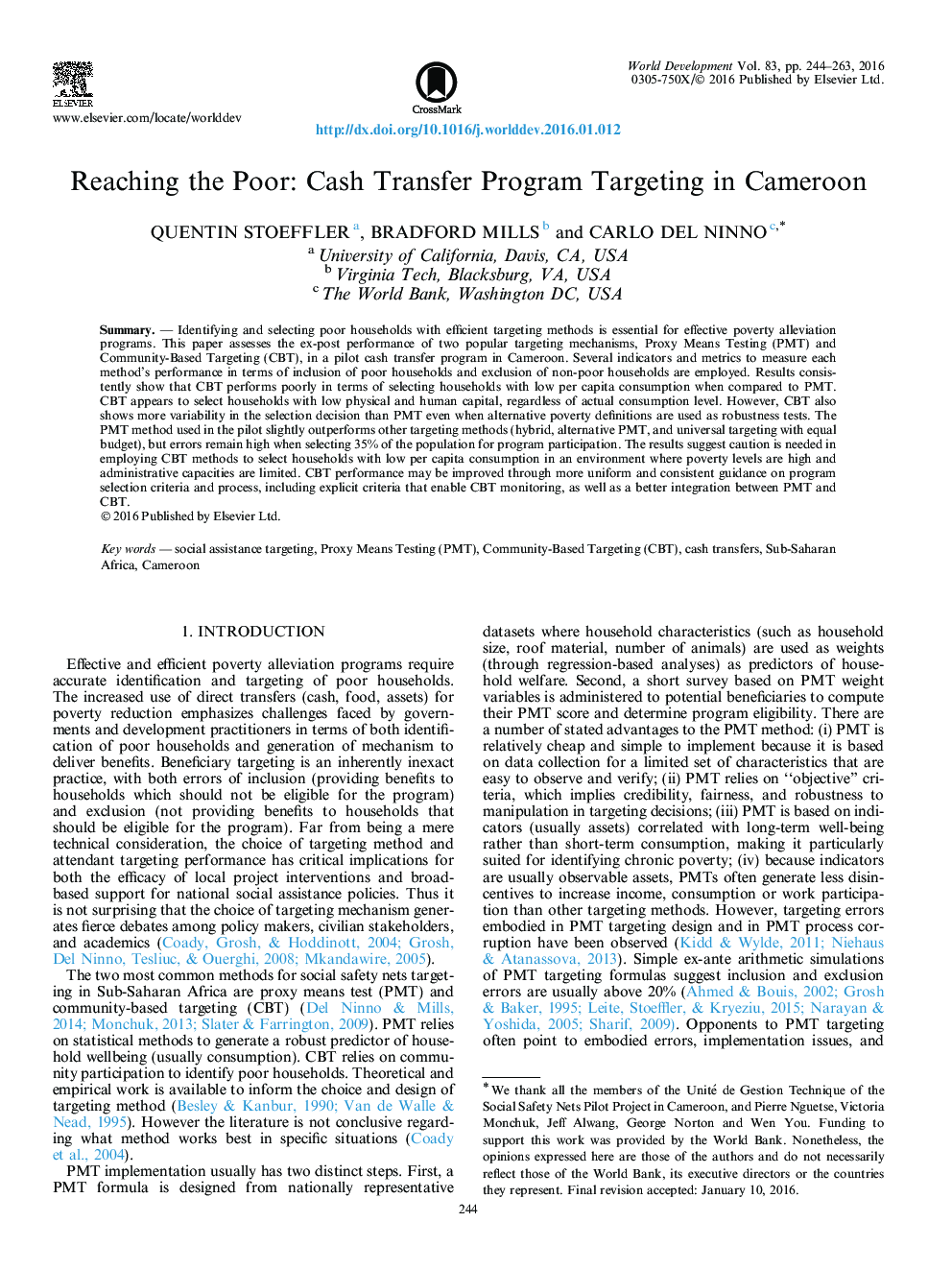| Article ID | Journal | Published Year | Pages | File Type |
|---|---|---|---|---|
| 7392729 | World Development | 2016 | 20 Pages |
Abstract
Identifying and selecting poor households with efficient targeting methods is essential for effective poverty alleviation programs. This paper assesses the ex-post performance of two popular targeting mechanisms, Proxy Means Testing (PMT) and Community-Based Targeting (CBT), in a pilot cash transfer program in Cameroon. Several indicators and metrics to measure each method's performance in terms of inclusion of poor households and exclusion of non-poor households are employed. Results consistently show that CBT performs poorly in terms of selecting households with low per capita consumption when compared to PMT. CBT appears to select households with low physical and human capital, regardless of actual consumption level. However, CBT also shows more variability in the selection decision than PMT even when alternative poverty definitions are used as robustness tests. The PMT method used in the pilot slightly outperforms other targeting methods (hybrid, alternative PMT, and universal targeting with equal budget), but errors remain high when selecting 35% of the population for program participation. The results suggest caution is needed in employing CBT methods to select households with low per capita consumption in an environment where poverty levels are high and administrative capacities are limited. CBT performance may be improved through more uniform and consistent guidance on program selection criteria and process, including explicit criteria that enable CBT monitoring, as well as a better integration between PMT and CBT.
Related Topics
Social Sciences and Humanities
Economics, Econometrics and Finance
Economics and Econometrics
Authors
Quentin Stoeffler, Bradford Mills, Carlo del Ninno,
